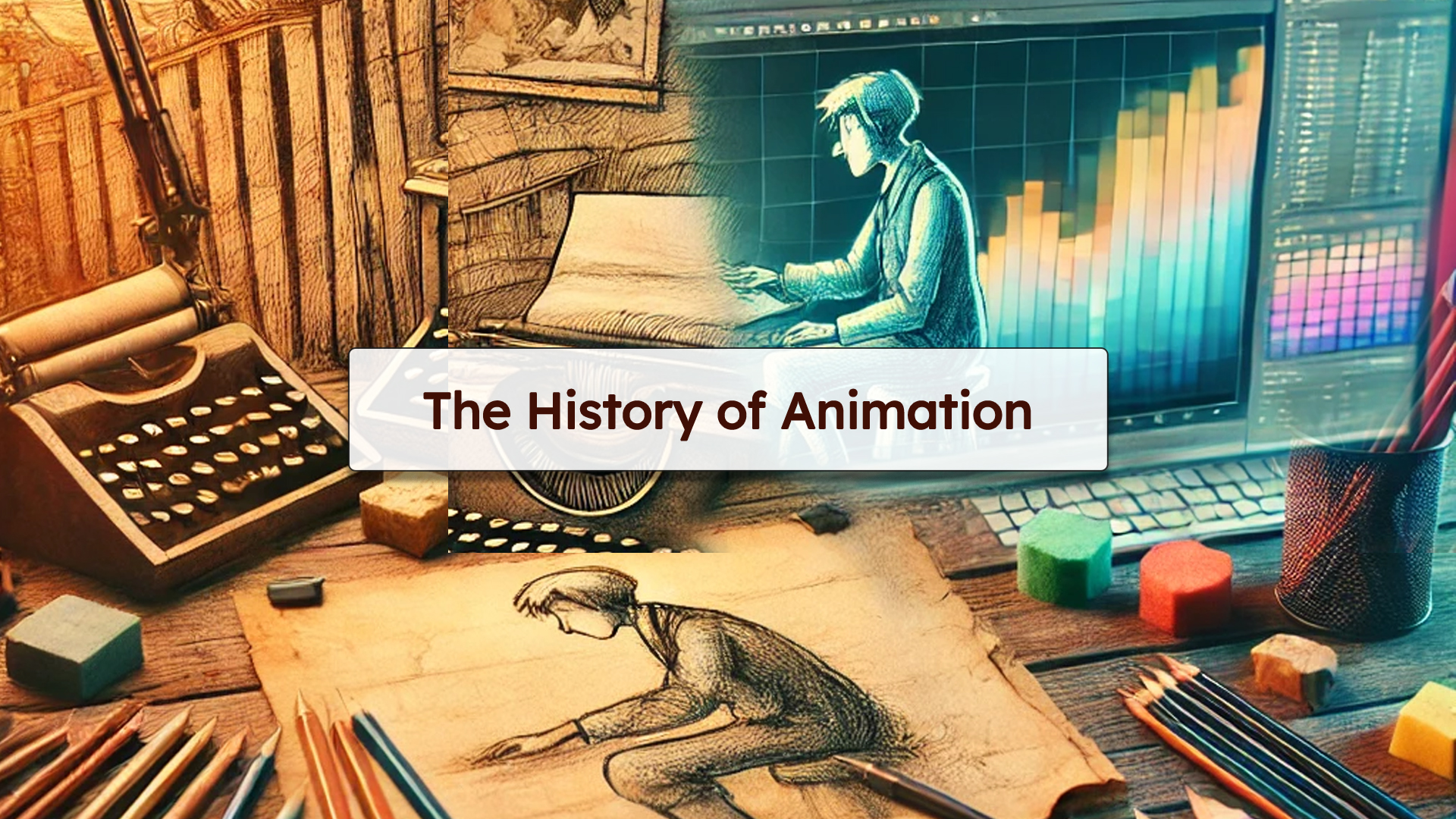Animation has come a long way since its humble beginnings. From hand-drawn sketches to computer-generated imagery (CGI) that now powers blockbuster movies, the journey of animation is filled with innovation, creativity, and technological advancement. This blog explores the fascinating history of animation, highlighting key milestones that shaped the art form we know today.
1. The Early Days: Hand-Drawn Animation (1900s – 1930s)
The roots of animation trace back to the early 1900s when artists used hand-drawn sketches to create moving images.
- Silent Film Era: In 1906, J. Stuart Blackton created Humorous Phases of Funny Faces, widely considered the first animated film.
- First Cartoon Character: In 1914, Gertie the Dinosaur by Winsor McCay gained massive popularity, setting the foundation for character-based animation.
- Steamboat Willie (1928): Walt Disney revolutionized animation with Steamboat Willie, introducing Mickey Mouse and synchronized sound. This marked the beginning of the Golden Age of Animation.
2. The Golden Age of Animation (1930s – 1950s)
This era witnessed the emergence of iconic studios and unforgettable characters.
- Disney Dominance: In 1937, Disney released Snow White and the Seven Dwarfs, the first full-length animated feature film. It became a massive success and established animation as a major entertainment medium.
- Warner Bros. and Looney Tunes: Bugs Bunny, Daffy Duck, and Porky Pig became household names thanks to Warner Bros.’ Looney Tunes.
- Tom and Jerry (1940): Created by William Hanna and Joseph Barbera, Tom and Jerry became a worldwide phenomenon, showcasing slapstick humor in animation.
3. The Rise of Television Animation (1950s – 1980s)
As television gained popularity, so did animated TV shows.
- Hanna-Barbera Era: Shows like The Flintstones (1960) and The Jetsons (1962) dominated prime-time television.
- Saturday Morning Cartoons: By the 1970s, animated series like Scooby-Doo, He-Man, and Transformers captivated children every weekend.
- Anime Emerges: In Japan, anime gained traction with shows like Astro Boy (1963) by Osamu Tezuka, eventually influencing global pop culture.
4. The Digital Revolution: Computer Animation (1980s – 2000s)
The introduction of computers changed the course of animation forever.
- CGI’s Big Break: In 1986, Pixar released Luxo Jr., showcasing the power of computer-generated imagery.
- Toy Story (1995): Pixar’s Toy Story became the first full-length 3D animated film, revolutionizing the industry.
- Visual Effects Boom: Films like Jurassic Park (1993) and The Matrix (1999) introduced CGI for realistic effects, pushing the boundaries of animation.
5. Modern Animation: Realism and Beyond (2000s – Present)
Today, animation has reached unparalleled levels of realism and creativity.
- Advanced CGI: Films like Avatar (2009) and Frozen (2013) demonstrated the power of hyper-realistic animation.
- Streaming Platforms: With platforms like Netflix, Disney+, and YouTube, animated content now reaches a global audience instantly.
- AI and Virtual Reality (VR): The future of animation is rapidly evolving with AI-generated content and immersive VR experiences, blurring the line between animation and reality.
6. The Future of Animation
The future of animation promises even more groundbreaking advancements:
- AI-Generated Animation: Tools like OpenAI’s DALL·E and Runway ML can now generate animated content based on text prompts.
- Metaverse Animation: As the metaverse expands, animated virtual worlds and avatars will become the norm.
- Real-Time Rendering: Game engines like Unreal Engine 5 allow filmmakers to create high-quality, real-time animation, reducing production time.
Conclusion
From simple hand-drawn sketches to mind-blowing CGI masterpieces, the evolution of animation has been nothing short of extraordinary. With rapid advancements in technology and storytelling, the future of animation is poised to break even more boundaries. One thing remains certain — the magic of animation will continue to inspire generations to come.


